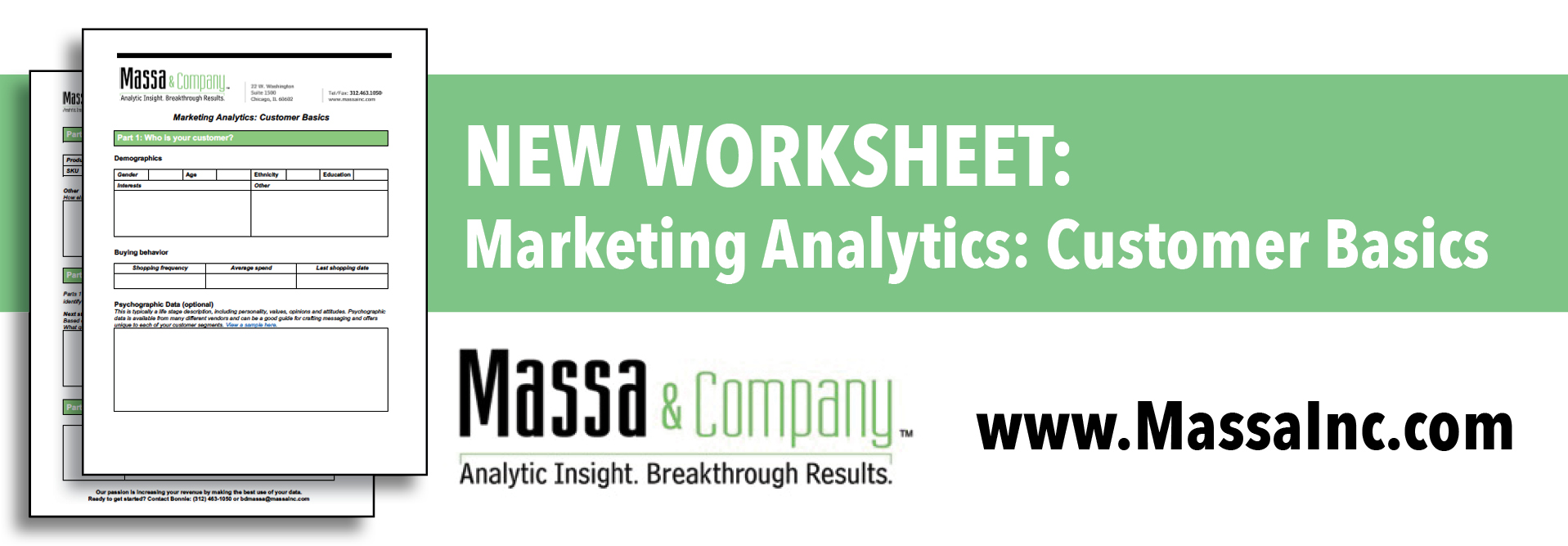
If you’ve been reading my blog for a while, you know that I’m passionate about marketing analytics and food. In both cases, I have to keep things simple, clear and data-driven. As I was watching old episodes of Barefoot Contessa: Back to Basics, I got to thinking about how to take my analytics truly back to basics.
For businesses and nonprofits alike, “marketing analytics” can be scary words. When I first start working with a client, I’m often met with spreadsheets of social metrics, their Google Analytics login and a stack of sales or donation reports. But it’s much simpler than that.
Think of marketing analytics as gathering the information you need as a marketer to make decisions on where to spend your budget to get the biggest bang for your buck. The heart of it is in three simple questions:
- Who is your customer?
- What are they buying?
- How is that changing over time?
For nonprofits, the questions are similar:
- Who is your donor?
- What are they giving?
- How is that changing over time?
These answers are the foundation for all of your marketing analytics, and they’re already in your databases. But, and not to beat a dead horse: it has to be in your data!
I’ve developed a new worksheet to make it easy to really drill down who each of your customer segments are. Download it here.
Let’s walk through it with business in mind, knowing that the strategies are similar for non-profits. (For more info about non-profits, view my post about Massa & Co’s data prep services – just in time for appeal season!)
- Who is your customer? Most companies think they know who their customers are, or at least have some basic sense of demographics by age, gender and interests. But to truly target your campaigns, you need to know more than that. How often do they shop? What is their average spend? And if you can afford to run psychographic data, this builds it up. (Here’s an example of many kinds of psychographic data available to append.) Using all the data you have in your database, or calling in some focus groups, put together a worksheet for each customer group.
- What are they buying? Each of your customer groups is no doubt buying different items and at different times. By segmenting your products or services as much as possible, what can you determine about their purchasing history? When are they most likely to buy certain things? Using this information, you can save on direct mail pieces when you know it’s just not going to work.
- How is that changing over time? I like to look at analytics from 2 years ago, 1 year ago and the last 6 months. With sizable gaps in your data, you can see overall changes without getting lost in the purchases made every day or week.
When working with clients, I can help them develop a worksheet about each of their client segments. These worksheets are perfect to keep posted at your desk or in meeting rooms. That way, as you’re developing marketing plans, advertisements and other materials, you’ve got your data – not your instincts – in mind.
In the end, you have an easy profile to reference like this:

Ready to get started? Download our worksheet. And next month, we’ll walk through how to use this data to drive decisions, step-by step.
Food for Thought: Ina’s Parmesan Smashed Potatoes
Potatoes are one of the four major food groups. (Well, to me anyway.) I have yet to eat a potato in a form that wasn’t incredible! So my ears perk up when I see a new potato recipe, and especially a simple one.
On a recent Saturday morning, I had Food Network on in the background while I did laundry and those other never-ending chores. Well, Ina Garten made a very simple recipe of Parmesan smashed red potatoes – using her Kitchenaid! Hallelujah! Finally a food expert that didn’t stand at the stove and manually mash those potatoes into creamy mound of deliciousness. I stopped what I was doing and sat down to watch!
My Great Aunt Ellen was the champion of creamy, lump-free mashed potatoes, and I can still see her mashing away at her 1950s era stove, all red in the face. When I saw her use the Kitchenaid and call them “smashed” to cover for the lumps left in the mound, I was all over it! Give this a try – it will make your brains fall out!

